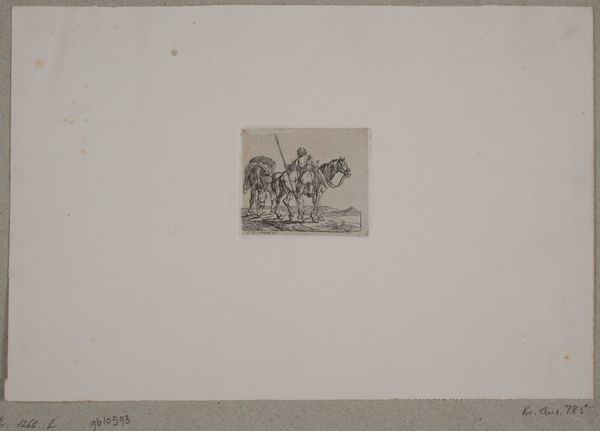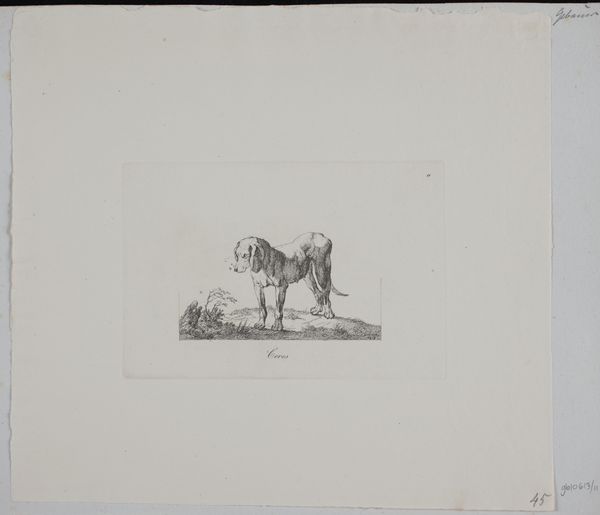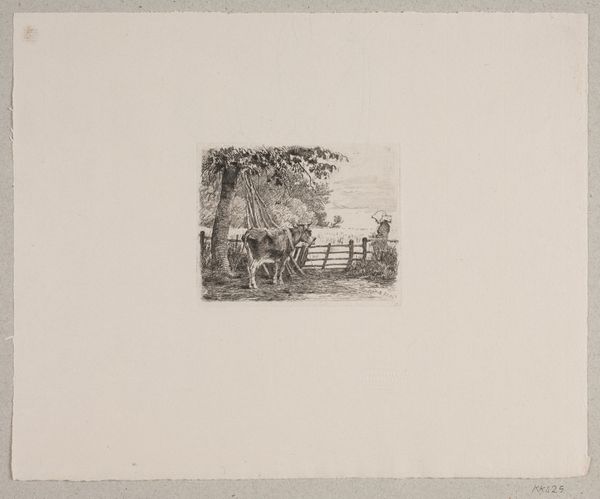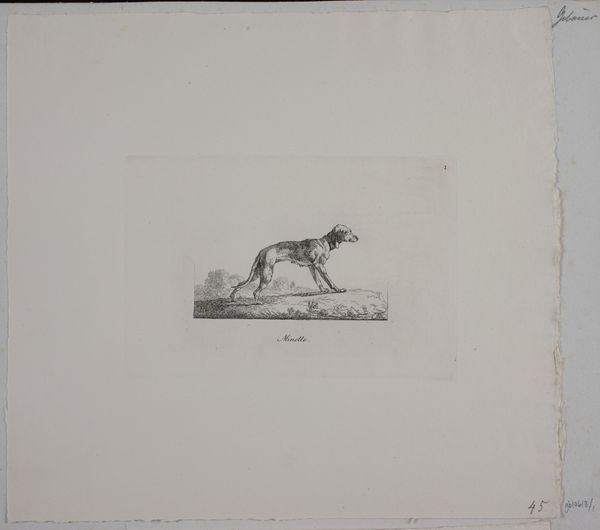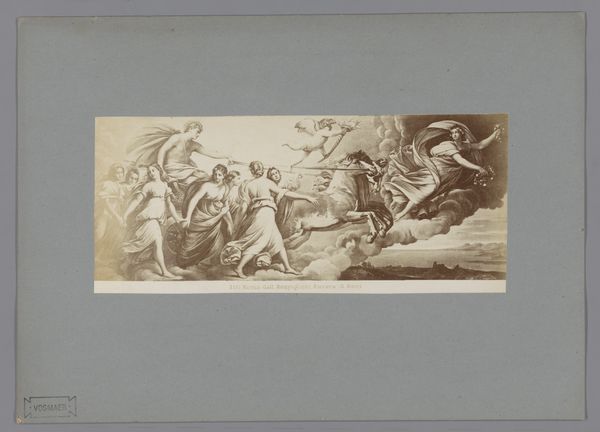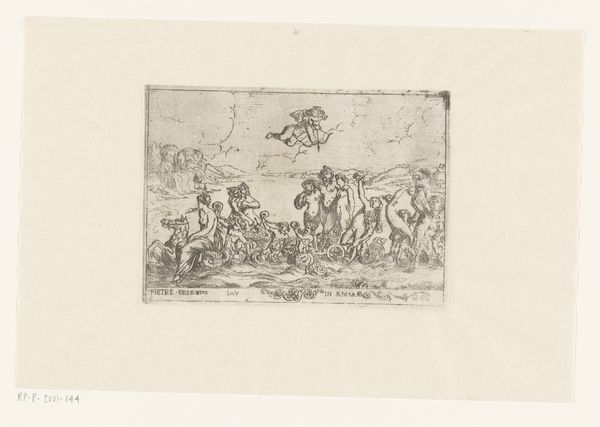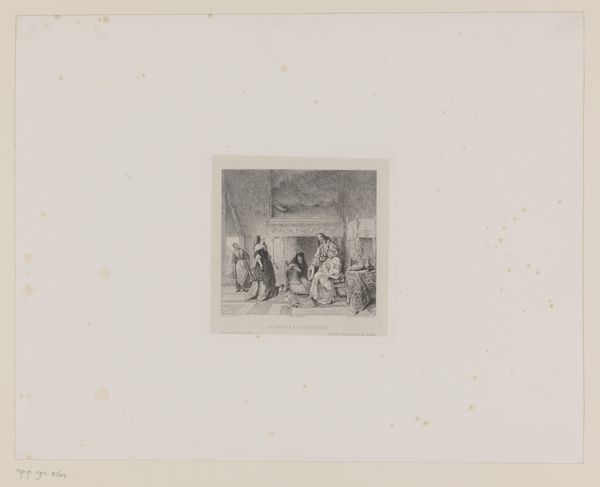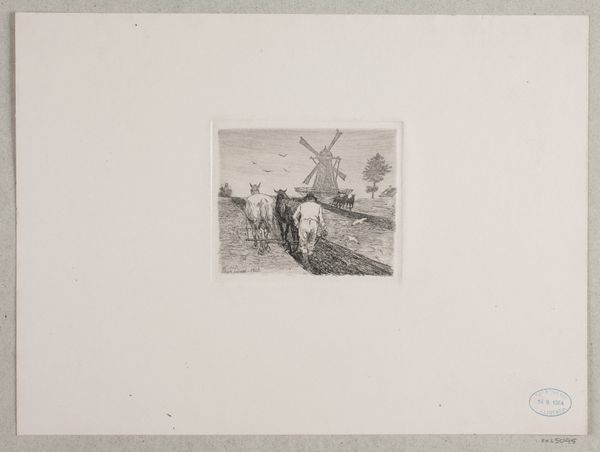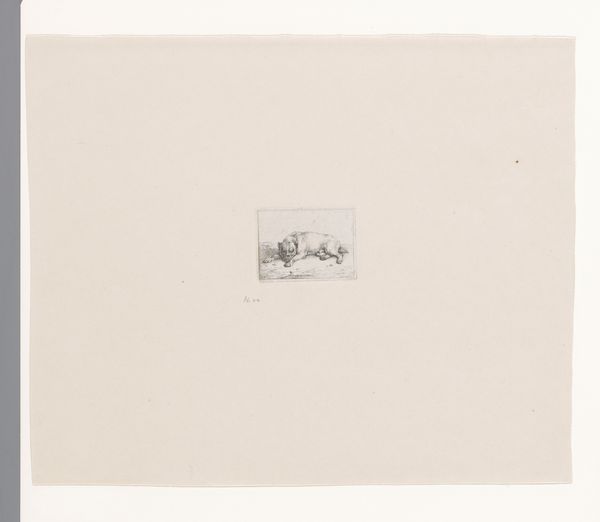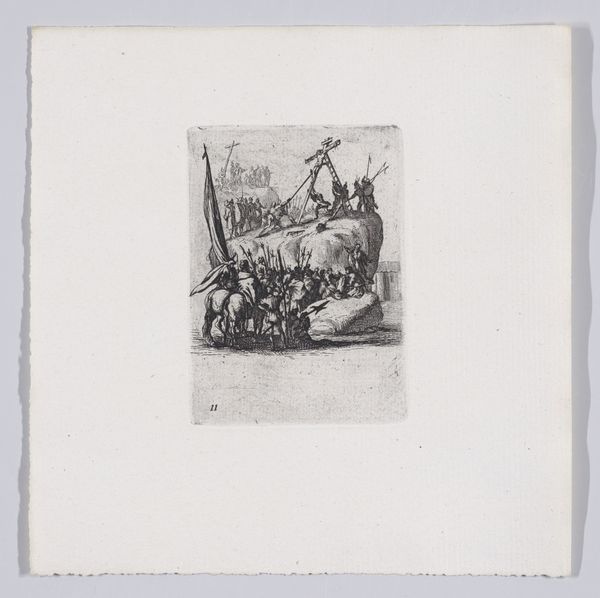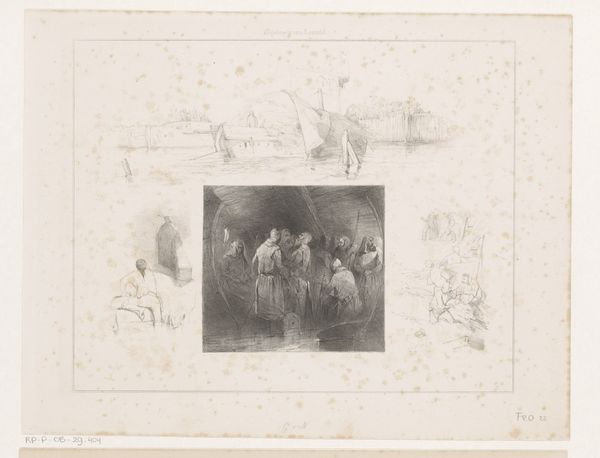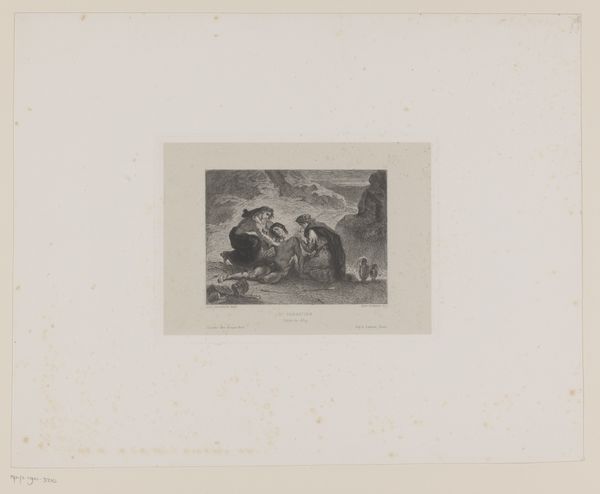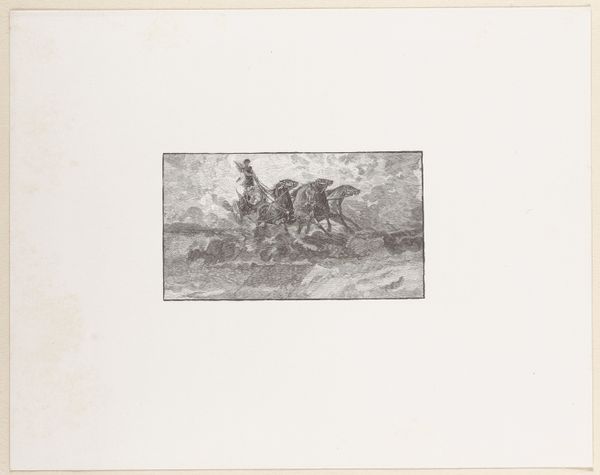
print, engraving
# print
#
figuration
#
romanticism
#
history-painting
#
engraving
Dimensions: 45 mm (height) x 95 mm (width) (plademaal)
Curator: The work we're looking at here is titled "En cavaler i fægtning," or "A Cavalryman in Combat," created in 1813 by Christian David Gebauer. It’s an engraving, a print that captures a fleeting, romantic moment of conflict. What’s your initial take? Editor: A skirmish etched in miniature. My first thought goes to the Romanticism style that informs it all: wild gestures of rage or command against the backdrop of nature. Yet it also has that certain distance from lived life one can find in older historical prints...it feels far removed somehow. Curator: I agree. There is a staged quality. But that distancing can actually enhance the symbolic weight of each element. The horse, for example, often represents power, vitality and perhaps untamed forces here ready for military action? Editor: Precisely! The upraised sword, too—an age-old symbol of justice and authority, now brandished with fury. This image also evokes something from humanity's deep past through the imagery of horse-riding men who fight for land and influence—almost centaur-like figures. It is potent stuff. Curator: It really is, particularly how Gebauer captures that tension with the limited scope afforded by printmaking! And I am struck how he made all that detail emerge out of what feels like almost nothing. One almost doesn't realize this all is on the brink between calm observation to chaos incarnate when glancing casually! Editor: The scale is compelling. Because we tend to associate images about warfare with size—enormous canvases to try and impress scale or number; or monuments constructed by society aiming specifically celebrate events around conquest which inevitably impact groups across civilization after many days before being complete themselves… Gebauer compresses these enormous actions happening every few weeks along roads leading through empires – it renders human conflict more accessible, making us realize we always did things with more precision when smaller numbers joined such struggles before modern armies began appearing slowly across each countryside village. Curator: Yes, an interesting contrast: we are looking backward here at individuals within conflict, who stand in stark difference from some generic representations or allegorical icons you see throughout history relating wars. In some sense its almost revolutionary how direct-to-the heart Gebaur went, instead choosing symbols from those individual acts… Editor: Ultimately, I feel like it boils down—no pun intended—to those marks left deep down throughout history upon memory due both visual representation but even more often emotionally through lived personal events surrounding such struggles between cultures represented perfectly still today due these men who stood among one single piece capturing moments now lost ever since it transpired so quick many generations past yet retained ever clear ever strong ever relevant after all years passing since they disappeared entirely forever… It is striking that through these pieces, this tiny image resonates powerfully. Curator: Absolutely, Gebauer’s small scene lets slip a huge sense memory—that persists powerfully despite passing decades after their creation because its art reaches across everything separating everyone! Thanks!
Comments
No comments
Be the first to comment and join the conversation on the ultimate creative platform.
